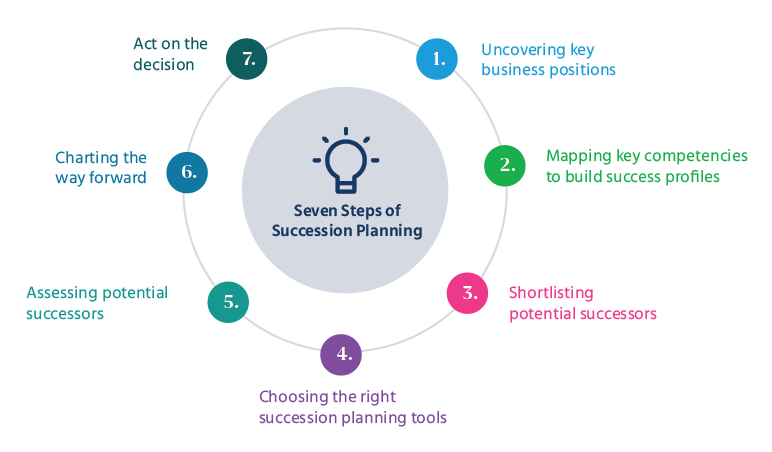This decision wasn’t an intuitive call. The development at JP Morgan underlines the importance of a succession plan and selecting the best people to steer a company toward the future to ensure continuity.
And while many companies may scout for an ideal candidate outside of their domain, we propose investing in the internal talent pool. It is likely to yield better results.
Most often, successors have big boots to fill, and it is no breeze. You must get the steps and the process right for the desired outcome.
So what should a succession plan include? What is needed for succession planning?

Here are 7 insightful and actionable succession planning steps that you can employ for any position or title. These steps have helped us make the succession planning framework a more relevant process for several leading companies.
So spring into action if you also wish to identify and shortlist your next-in-line. You’ll love this list of succession planning strategies that’ll help you maintain continuity and even enhance future operations.
The Seven Steps of Succession Planning Include:

- Uncovering key business positions:
Key business positions are extremely important for organizational continuity and success. These positions are significant because either they are too critical to be left vacant for extended periods or are extremely challenging to recruit for.
- Mapping key competencies to build success profiles:
This step involves identifying the behavioral requirements of a specific role to find the perfect fit to make your evaluation more streamlined, objective, efficient and effective.
- Shortlisting potential successors:
Shortlisting candidates as successors should span the whole organization. Besides senior management, look across departments, positions and teams for any employee who can be a potential successor.
- Choosing the right succession planning tools:
Working out the right tools and systems that must be in place to support the roles derives fruitful results.
- Assessing potential successors:
Devising in-depth, robust strategies and exercises to assess whether the nominated candidates have the requisite knowledge, skills and caliber to perform the new role.
- Charting the way forward:
Not every candidate would be a born successor. Hence, chart out a customized way forward for each potential’s journey to nurture him/her to attain a certain level.
Be proactive and implement the succession planning process the moment your hiring commences. What seems a one-off process is time-consuming, stretching into months or even years. In case of an abrupt need, it’s always better to be prepared than sorry.
Let’s elucidate these steps for you.









 Behavioral Competencies
Behavioral Competencies Cognitive Competencies
Cognitive Competencies Coding Competencies
Coding Competencies Domain Competencies
Domain Competencies



































Would you like to comment?